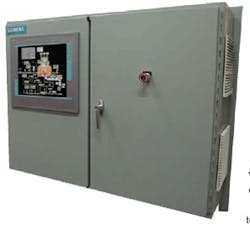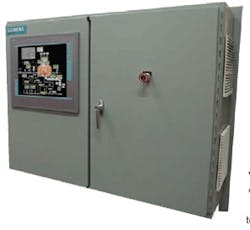Siemens Industry Packages Burner Management Systems
"For years, the National Fire Protection Association (NFPA) put strict requirements on the use of PLC logic solvers that seemed impossible to validate for burner management," says Siemens' safety systems product manager, Charles Fialkowski. "It is almost terrifying to see how complicated PLC-based burner management systems have to be to comply with NFPA requirements.
Siemens Industry met this challenge by developing a standardized BMS design that incorporates all the hardware and all the software components required for a complete BMS. These components also are independently certified to IEC 61508 (that is, they are SIL-rated).
The design incorporates the controller, I/O, networking switch, power distribution and local HMI, so the user has the flexibility to connect, monitor and control using anyone's field sensors and final control elements, Fialkowski says.
According to Fialkowski, operations and maintenance personnel can now safely and locally monitor, operate, diagnose, and maintain all aspects (startup, steady-state, and shutdown) of fired equipment.
Siemens' BMS400F burner management system was designed, engineered and built to offer complete compliance to SIL 3, based on IEC 61508, and does not require any external devices to improve safety or performance, unlike other systems and previous designs.
The design is built to comply with both NFPA standards and codes (85 and 86).
"This is a bold statement," Fialkowski admits, "but we've produced the first standardized BMS design that is completely compliant, without extra relays, timers or diagnostic devices. This should improve safety and operations and maintenance substantially.
"We have reduced the complexity of the system drastically by producing prepackaged designs and preassembled NEMA cabinets with the PCS 7 hardware and software already installed and integrated.
"One could easily make the argument that by adding external devices like relays, watchdog timers and the like to a purpose-designed SIS system, you would lower the safety and increase the nuisance trip rate. We've chosen to do it differently, and we think better."
Siemens also reports that the TÜV-certified and preconfigured burner management system engineering templates reduce design cost and time at the same time that they improve safety, and the integrated historian complies with OSHA Process Safety Management (PSM) requirements for management of change.
The system is also supplied with advanced security features to prevent inadvertent or unauthorized access, Fialkowski says.
The extensive functions of the integral local HMI provide a graphical view of the burner management system operation directly at the local BMS cabinet.
Operators have access to built-in system diagnostics, which Siemens says will make maintenance operations fast and simple, and which should reduce downtime. "This will also increase safety," Fialkowski says.
In addition, BMS400F can be supplied with a complete suite of Siemens combustion control instrumentation, including pressure and temperature transmitters for header pressure, header temperature and drum level; flowmeters for feedwater and fuel (liquid and gas); level systems for make-up water and condensate tanks; and smart positioners for all valve requirements.
Finally, all instruments include advanced diagnostics that can be coupled with PCS7 for asset management and preventive maintenance.
For more information, visit www.usa.siemens.com/bms.


